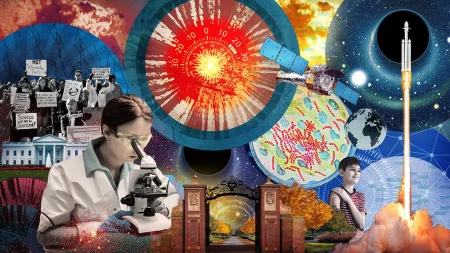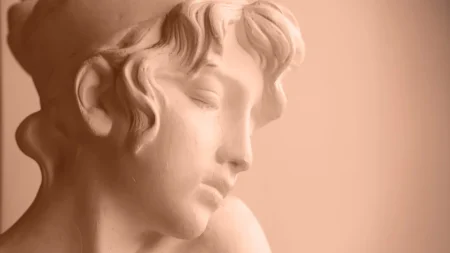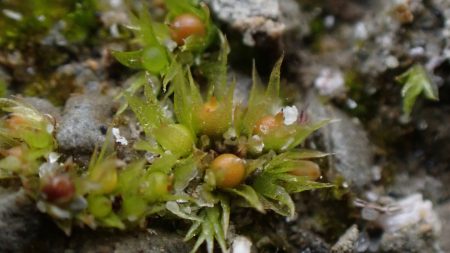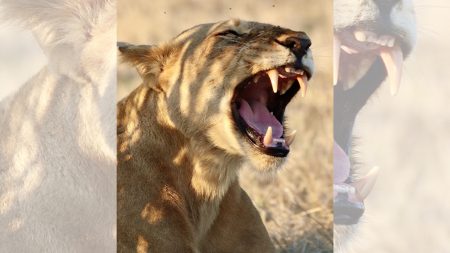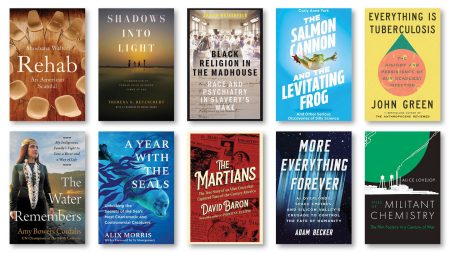The Day Earth Went Dark: Exploring History’s Worst Day
Approximately 66 million years ago, Earth experienced what might be considered the worst day in the last half billion years. An asteroid, roughly the size of Mount Everest, slammed into our planet with the force of 10 billion atomic bombs, instantly vaporizing in a blast zone hotter than the sun’s surface. This cataclysmic event, which wiped out 75 percent of all species including every non-avian dinosaur, is the central focus of “Impact: The End of the Age of the Dinosaurs,” a new exhibition at the American Museum of Natural History in New York City. The exhibition takes visitors on a journey through time, allowing them to experience life before, during, and after this planet-altering moment.
The exhibition begins by immersing visitors in the vibrant Cretaceous world that existed before disaster struck. In dimly lit halls, life-size dioramas showcase the diversity of prehistoric life: a massive mosasaur attacks a long-necked plesiosaur in one display, while nearby, a quill-adorned Triceratops (based on controversial fossilized skin findings) tears down a small tree. The Hell Creek formation diorama from North Dakota features a rich ecosystem including turtles, birds, and Didelphodon—an extinct predatory mammal resembling a Tasmanian Devil. Interactive elements engage visitors personally with this ancient world; one display determines what Cretaceous creature matches your lifestyle habits, while another plays sounds of extinct animals like Beelzebufo, a massive predatory frog that once roamed the Earth.
Then comes the impact—presented through a powerful 6-minute film detailing the asteroid’s devastating effects. The exhibition’s thoughtfully dim lighting intensifies the gravity of what unfolded: tsunamis inundating coastlines, earthquakes rattling the ground, acid rain pouring from the skies, and wildfires scorching the terrain. The asteroid’s collision launched trillions of tons of rock skyward, blocking most sunlight for a year and a half. This darkness triggered a catastrophic chain reaction—plants died without sunlight, herbivores starved without plants, and carnivores perished without prey. The next exhibition room drives this home visually: the once-thriving Triceratops is reduced to a pile of bones, while the scent of wildfires fills the air, creating a multi-sensory connection to this ancient catastrophe.
The exhibition meticulously presents the scientific evidence supporting the asteroid impact theory. Spotlights illuminate displays explaining how researchers built their case, including the discovery of the Chicxulub crater off Mexico’s coast. A striking globe shows hundreds of locations where scientists have found iridium—a rare metal signaling extraterrestrial impact. Notably absent is much discussion of alternative theories like volcanism. According to Denton Ebel, a curator in the museum’s Department of Earth and Planetary Sciences, this reflects the scientific consensus: “We don’t need volcanoes. The impact alone explains it. Explains the timing, explains the knife edge in history that’s recorded in the rock record.”
While the asteroid’s destruction was devastating, it also cleared the way for new life to flourish. The exhibition’s later sections show how certain traits—like the ability to break open nuts—helped some animals survive in the aftermath, and how emptied landscapes were gradually filled by rainforests. Visitors can discover whether their quiz-matched Cretaceous creature survived or perished. As Earth slowly recovered, the Age of Mammals began—an era that continues to this day, making our own existence a distant consequence of this ancient disaster.
The exhibition closes with a look toward our future relationship with asteroids. While there remains a small chance that another massive impact could threaten Earth, modern technology would likely allow us to detect it in advance and potentially prevent catastrophe. An interactive display lets visitors practice asteroid deflection techniques using lasers or probes similar to NASA’s DART mission, connecting ancient history to contemporary space science. For those concerned about modern environmental crises, “Impact” offers a powerful perspective: a thriving world can be thrown into chaos, yet eventually recover and thrive again—albeit in dramatically different forms.






